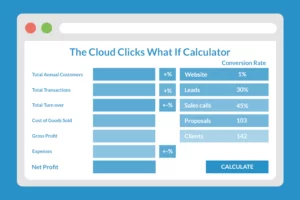If you’re looking to take your website’s traffic to the next level, this guide is for you; it covers various SEO strategies that can help boost your online presence. In this advanced guide, we’ll explore various techniques and methods that can help increase web traffic and improve your online presence.
First, we will delve into the world of Search Engine Optimization (SEO) by defining what it is, discussing its benefits, and exploring different types of SEO planning. Next, we’ll break down the steps for optimizing your website to be search engine friendly through exploring keywords, on-page tactics, and off-page techniques.
Furthermore, we will discuss technical SEO planning such as site speed optimization, mobile responsiveness, and usability improvements, as well as structured data markup implementation. We’ll also cover content marketing tactics aimed at improving website traffic by creating relevant content for your audience while leveraging social platforms and influencers for increased visibility.
Last but not the least, we will teach you how to analyze and track the results of your efforts in driving more traffic using SEO programs, by measuring their impact on conversions, analyzing user behavior on your website, and utilizing tools designed specifically for tracking performance indicators related to organic search rankings.
1. What is SEO?
Search Engine Optimization, or SEO, is a digital advertising strategy that aims to improve the visibility of your website on the search engine results pages (SERPs). By optimizing your site for SEO, you can drive more organic traffic and increase the chances of converting visitors into customers. In this section, we will explore the definition of SEO, its advantages, and various strategies employed in it.
Definition of SEO
SEO refers to a set of techniques used by marketers and webmasters to optimize their websites for search engines like Google, Bing, and Yahoo. Ranking higher in SERPs is the primary goal of SEO, allowing users to easily find your website when searching for relevant information or products/services related to your business niche.
Benefits of SEO
Increase Organic Traffic
A well-executed SEO campaign can significantly boost organic traffic – non-paid visits from users who find your site through search engines and snippet features.
Better User Experience
Optimizing your website’s structure and content not only helps with rankings but also enhances user experience by making it easier for them to navigate through the site.
Credibility & Trustworthiness
A high-ranking position in SERPs signals credibility and trustworthiness as users tend to trust sites appearing at the top results over those buried deep down on subsequent pages.
Cheaper Long-term Marketing Strategy
The costs associated with implementing an effective SEO strategy are relatively low compared with other forms such as pay-per-click advertising campaigns which can be expensive in the long run.
Types of SEO Strategies
There are three main types of SEO planning that businesses can employ to improve their online presence:
- On-Page SEO: This involves optimizing individual web pages, including content and HTML source code, to rank higher and earn more relevant traffic from search engines. Examples include keyword strategy optimization, meta tags, page titles, header tags, featured snippets, and internal linking.
- Off-Page SEO: This focuses on external factors that impact your website’s ranking factor such as backlinks from other sites. Link building is crucial for improving domain authority and overall rankings. Ensure that broken links are not ignored to avoid being penalized.
- Technical SEO: This encompasses all technical aspects related to your site’s performance like page load speed, mobile responsiveness, structured data markup (schema), etc., which directly or indirectly affect its visibility on SERPs.
In the following sections of this blog post by Cloud Clicks – Digital Marketing Agency-, we will delve deeper into each type of strategy while providing actionable tips for business owners looking to drive added traffic through the effective implementation of these techniques.
Utilizing the correct techniques can help you maximize your website’s SEO performance. Applying the correct tactics can assist in optimizing your website for SEO success.
2. To achieve higher SERP rankings, an effective SEO strategy must be implemented to maximize visibility and attract more customers.
Optimizing your website for SEO is crucial in driving more traffic and increasing visibility online. By researching and selecting relevant keywords, you can improve your website’s ranking on SERPs, making it easier for potential customers to find your business. In this section, we will discuss various SEO tips and techniques that can help optimize your website for better performance in search results.

Keyword Research and Selection
Keyword research is the foundation of any successful SEO strategy. Identifying words or phrases that internet users are likely to type into a Google search bar or other sites when seeking out similar goods and services are the cornerstone of any successful SEO plan.
To perform keyword searching you can use tools like Google Keyword Planner, Ahrefs Keywords Explorer, or Ubersuggest. Once you have a list of potential keywords, analyze their competition level and search volume before selecting the most appropriate ones for your content.
Pillar pages link to clustered content to go deeper into detail about more specific topics that share the central keyword theme. Write supporting blog posts that target long tail keywords.
People nowadays do not only search for answers by typing on search bars. Others use voice search and they tend to speak in full sentences rather than phrases. Optimize for voice search by researching and utilizing long tail keywords.
Having adequate knowledge of how to identify keywords and search terms that people use to discover your website, makes it easier to draw in more viewers. When a user types something into the Google search box, Google lists in order from top to bottom the most relevant and authoritative pages to answer the user’s search query.
On-Page Optimization Techniques
Title tags
Ensure each page has a unique title tag that accurately describes its content while incorporating target keywords on each page title.
META descriptions
Write compelling Meta descriptions with relevant keywords included; these should encourage users to click through from SERPs.
H1-H6 headings
Use header tags (H1-H6) strategically throughout the content; include primary and secondary keywords in these headings.
URL structure
Create clean, descriptive URLs that include keywords and are easy to read for both users and search engines.
Internal linking
Establish a strong internal link structure by connecting relevant pages within your website; this helps search engines understand the relationship between different pieces of content on your site.
Off-Page Optimization Techniques
In addition to optimizing individual pages, focusing on off-page SEO planning is essential. These techniques help improve your website’s authority, credibility, and online presence. Some effective off-page optimization methods include:
Link building
Acquire high-quality backlinks from authoritative websites in your niche or industry that strengthen your link building performance. This can be achieved through writing guest post, outreach campaigns, or creating shareable content on a particular topic that naturally attracts links and referral traffic.
Social media marketing
Promote your content across various social platforms like Facebook, Twitter, LinkedIn, and Instagram to increase visibility and drive traffic back to your website.
Local SEO optimization
If you have a local business with physical locations or serve specific geographic areas only (e.g., restaurants), optimize for local searches by claiming Google My Business listings and incorporating location-specific keywords into your content strategy.
By utilizing the advice in this piece, you can enhance your site for SEO and bring more visitors to it. Now let’s examine some tactics that can be employed to boost the discoverability of your website on search engines.
3. Technical SEO approach to Drive Traffic to Your Website
In this digital age, having a strong online presence is essential for any business owner looking to drive more traffic and increase conversions. One of the key aspects of achieving this goal is implementing effective technical SEO planning that will help improve your website’s performance and user experience.
Site Speed Optimization

Website loading speed plays a crucial role in retaining visitors and improving search engine rankings. A slow-loading site can lead to higher bounce rates, lower engagement levels, and ultimately affect your bottom line. To optimize your page speed, consider the following:
- Analyze your website’s performance using Google PageSpeed Insights
- Optimize images by compressing them without losing quality using tools like TinyPNG
- Minify CSS, JavaScript, and HTML files with tools such as Minifier.org
- Leverage browser caching to reduce server load times on subsequent visits.
Mobile Responsiveness and Usability
In today’s world where mobile devices are increasingly used for browsing the internet, it has become imperative for websites to be mobile-friendly. A responsive design ensures that your content looks great on all screen sizes while providing an optimal user experience across different devices. Some tips for enhancing mobile responsiveness include:
- Avoiding fixed-width elements that may not scale well on smaller screens.
- Making sure text is easily readable without requiring users to zoom in.
- Implementing a mobile-friendly navigation menu for ease of use on smaller screens.
To ensure an optimal user experience, it is essential to provide intuitive navigation, clear calls-to-action and straightforward forms. This will help keep users engaged and encourage them to explore your website further.
Structured Data Markup
Structured data markup is an essential technical SEO approach that helps search engines better understand the content on your website. By implementing structured data using Schema.org, you can provide additional information about your business, products, or services in a way that Google and other search engines can easily interpret.
This may result in rich snippets appearing in search results, which can improve click-through rates (CTR) and drive traffic to your site. Some examples of structured data types include:
- Articles
- Products
- Recipes
- Reviews
To get started with implementing structured data markup on your website, consider using tools like Google’s Structured Data Markup Helper or JSON-LD Generator for Schema.org vocabulary.
By optimizing your website’s speed, mobile responsiveness, and usability, as well as implementing structured data markup techniques you can increase the visibility of your website in search engine results. Moving on to content marketing strategies for driving traffic to your website, is an effective way to build a strong online presence.
Key Takeaway
Mastering SEO is a process of constant learning, experimentation, and creativity. Follow SEO tips and apply them constantly to your web content. By employing appropriate SEO planning, you can increase the number of visitors to your website and consequently maximize your online presence for successful digital advertising.
With the right techniques, you can drive traffic and improve your online visibility, ultimately leading to greater success in digital advertising.
4. Content Marketing Strategies for Driving Traffic to Your Website
In the digital advertising world, content is king. High-quality and relevant content not only helps improve your website’s search engine rankings but also keeps users engaged and encourages them to share it with their networks. In this section, we’ll explore ways to draw more visitors to your website through effective content marketing tactics.

Creating Quality Content That Is Relevant To Your Audience
To create quality content that resonates with your target audience, you need first to understand their needs, preferences, and pain points. Conduct thorough audience research by analyzing demographic data from tools like Google Analytics or social media insights. Gather direct input from your target audience by utilizing surveys or polls on your website and social platforms.
- Create engaging blog posts and original content without spammy links that address common questions or concerns of your target market.
- Develop in-depth guides or e-books offering valuable information related to industry trends.
- Publish case studies showcasing successful projects completed by clients using Cloud Clicks’ services.
- Generate eye-catching visuals that simplify complicated topics in a user-friendly way.
Promoting Your Content Through Social Media Platforms
Social platforms are excellent channels for promoting and distributing your content effectively among a broader audience base. Here are some tips on how you can leverage various social media platforms:
- Facebook: Share blog posts as status updates along with eye-catching images; join relevant groups where potential customers might be active; run targeted ads based on user interests and demographics.
- Twitter: Tweet your content with relevant hashtags; engage in conversations related to your industry or niche; participate in Twitter chats and Q&A sessions.
- LinkedIn: Share articles on both personal and company pages, contribute valuable insights to group discussions, and publish long-form posts directly on the platform using LinkedIn Pulse.
Leveraging Influencers To Increase Visibility Of Your Content
Influencer marketing is an effective way of amplifying your content’s reach by leveraging the credibility and audience base of influencers within your industry. By collaborating with these key opinion leaders, you can tap into their established networks and drive more traffic to your website. Here are some ways you can work with influencers:
- Gather quotes from experts for a round-up blog post or interview them for a podcast episode.
- Create content that is co-branded like webinars, e-books, or infographics that provide value to both parties’ audiences.
- Sponsor influencer-generated content such as product reviews or tutorials featuring Cloud Clicks services.
- Create multimedia posts like videos or side presentation and posts them on external sites and social platforms.
Content marketing plans are an efficient means of steering visitors to your site. By analyzing and tracking the results of your SEO procedures, you can better understand how well they are performing and make necessary adjustments to your future and existing content to achieve improved performance.
5. Analyzing and Tracking Results of Your SEO Efforts
Once you have employed various SEO planning, it is critical to assess and monitor the outcomes to guarantee that your endeavors are producing results. By measuring the impact of SEO on traffic and conversions, analyzing user behavior on your website, and utilizing tools to track performance, you can make data-driven decisions for continuous improvement.

Measuring the Impact of SEO on Traffic and Conversions
To determine if your SEO procedures are driving additional traffic to your website, monitor key metrics such as natural search traffic, click-through rates (CTR), bounce rates, pages per session, average session duration, and conversion rates. You can use Google Analytics or other web analytics platforms like Matomo for this purpose.
Organic search traffic
The number of visitors coming from search engines without paid advertising.
Click through rate
The percentage of users who clicked a link in search engine results pages (SERPs) out of all impressions received by that link.
Bounce rate
The percentage of single-page sessions where users left without interacting with any element on the page.
Average session duration
The average time spent by users during a visit to your website.
pages per session
The average number of pages viewed by users during their visit to your website.
Conversion rate
The percentage of users who completed a desired action on, such as making a purchase or signing up for a newsletter .
Analyzing User Behavior on Your Website
Understanding how users interact with your website can help you identify areas for improvement and optimize the user experience. Analyze metrics like page views, time spent on pages, exit rates, and navigation paths to gain insights into user behavior. Tools like Hotjar, Google Search Console, or Mouseflow can provide valuable data through heatmaps, session recordings, and conversion funnels.
Utilizing Tools to Track Performance
Besides web analytics platforms and user behavior analysis tools mentioned above, various other tools can help track the performance of your SEO efforts. Some popular ones include:
- Ahrefs: A comprehensive SEO toolset that provides keyword research features, backlink analysis capabilities, rank tracking, and more. An all-in-one SEO tool kit that offers keyword testing, site audits, rank tracking, and more.
- SEMrush: A versatile digital advertising platform offering solutions for SEO audits, content optimization, social media management, and competitor analysis. A website crawling tool that can help you identify technical SEO issues and optimize your site’s on-page elements such as featured snippets.
Learning SEO tools such as Google Analytics, Ahrefs, and SEMrush will help you develop a strategy to generate traffic to your website. Make sure that the your website’s core web vitals has a good standing.
By regularly analyzing and tracking the results of your SEO procedures, you can identify areas for improvement and make data-driven decisions to drive additional traffic to your website. Remember that SEO is an ongoing process, and continuous optimization will help maintain or improve your rankings in SERPs.
Frequently Asked Questions
Conclusion
By leveraging SEO plans to boost website visibility, you can amplify o engine rankings and ultimately result in increased web traffic. You need a combination of technical optimization, content marketing strategies, and analysis & tracking results to maximize the effectiveness of these efforts and be included in the top-performing pages.
With dedication and consistency in following best practices for SEO techniques, you will be able to achieve long-term success with increased natural search results rankings that lead directly to higher web traffic levels.
Maximize your website’s visibility and reach more customers with effective SEO planning. Let us help you take advantage of the latest digital advertising techniques to drive traffic to your site.







